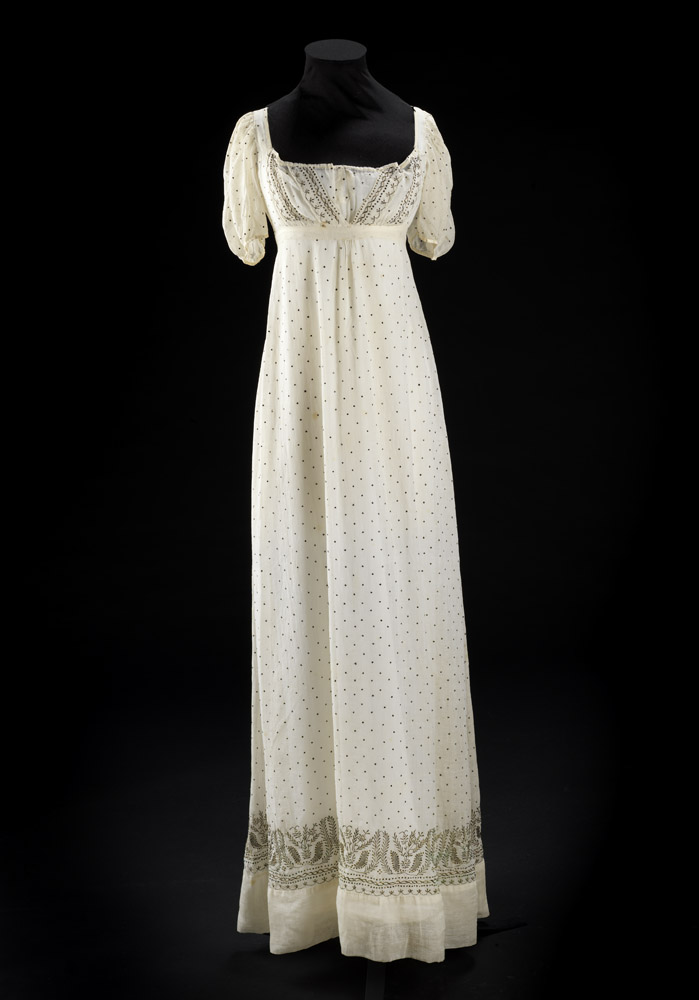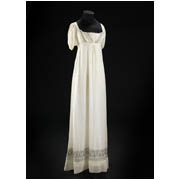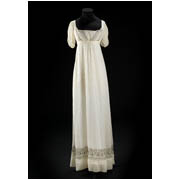Details
- Object type
dress
- Place Associated
South Asia, India, Bengal (place of manufacture) (material); Britain (place of manufacture) (dress)
- Date
circa 1805-1810
- Materials
cotton, metal, hand-stitched
- Description
-
Woman's dress in white cotton muslin with badla embroidery worked in thin silver metal strips with a regular pattern of small dots. Wide rectangular-shaped neckline with drawstring, bodice decorated with applied diagonal borders either side with silver metal strip dotted, twisted and swag borders. Short puffed sleeves gathered into shoulders and narrow cuff. High raised waistline. Skirt, full-length, attached flat at front with fullness gathered into centre back. Silver metal border around hem with leafed branches above dotted and swag rows. Plain muslin border added below to lengthen skirt.
In the early 1800s white muslin - finely woven cotton - dresses were very fashionable. The highest quality muslins were hand-woven and embroidered in Bengal, which had been conquered by the British East India Company after the Battle of Plassey in 1757. After the Calico Acts than had banned the importation of cotton were repealed in 1774, the East India Company made a fortune importing bolts of Bengali muslin.
This Bengali muslin is beautifully embroidered with small dots and borders of boteh or cone motifs. Indian thread embroidery is known in general as zardozi. The specific technique on this muslin that uses flattened metal wire rather than threads is called badla; the regular pattern of small dots embroidered over the ground using badla is known as mukaish. The dress was probably worn as an evening dress when the badla embroidery would have twinkled in the candlelight.
- Credit Line/Donor
Gifted by Dr Story, 1942
- ID Number
E.1942.70.d
- Location
In storage




